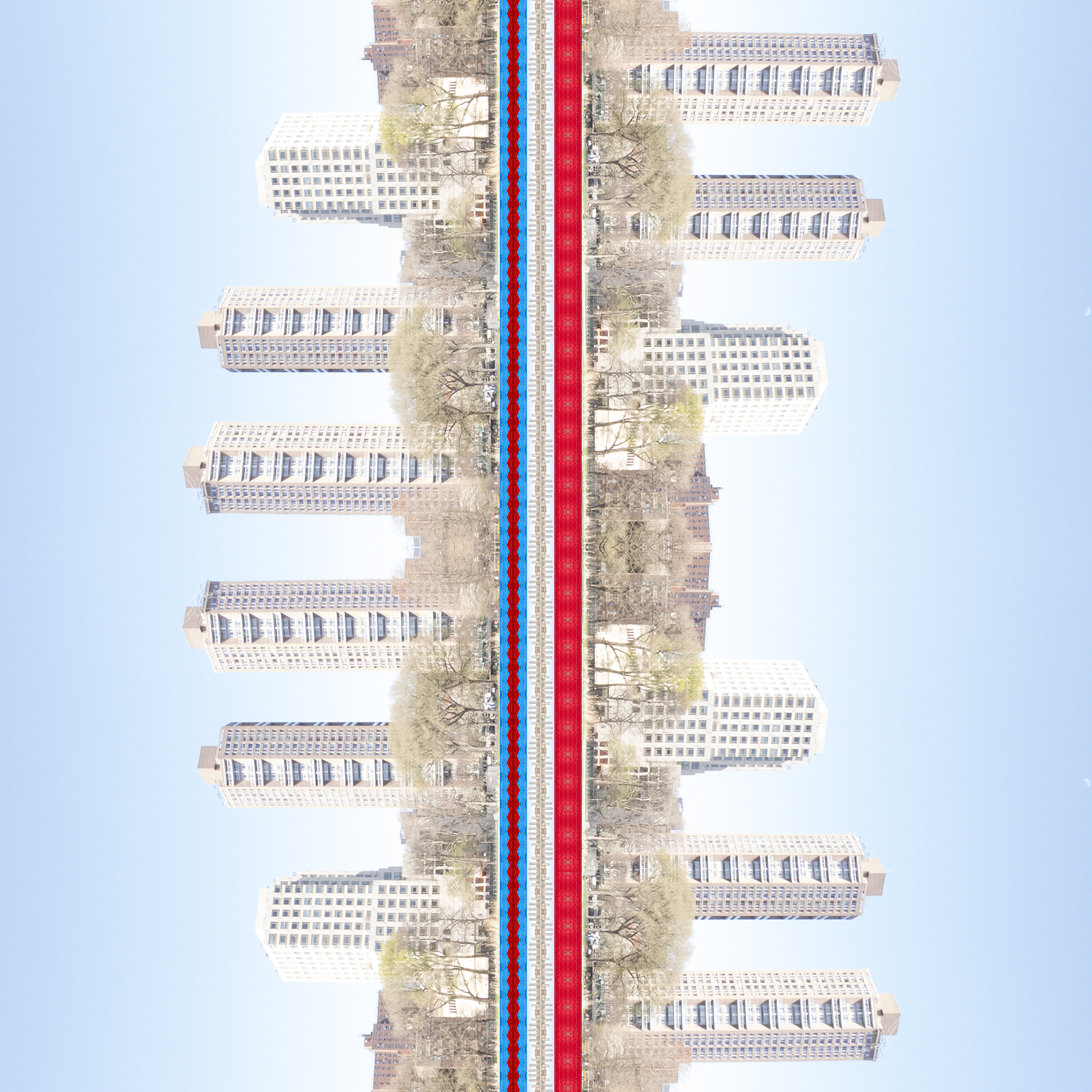The Urban Lens: Artist Paul Morris twists the NYC skyline into a colorful kaleidoscope
BY DANA SCHULZ Images © Paul Morris
6sqft’s series The Urban Lens invites photographers to share work exploring a theme or a place within New York City. In this installment, Paul Morris shares his digitally altered streetscapes. Are you a photographer who’d like to see your work featured on The Urban Lens? Get in touch with us at tips@6sqft.com.
New York City is full of urban photographers, capturing streetscapes and buildings as they morph and grow and alter our neighborhoods. But very few can find a way to do this that is totally new, which is why the work of local artist Paul Morris is so refreshing. By juxtaposing his original photography with his graphic design skills, his large-scale patterns “capture and restructure elements discovered in urban landscapes to create innovative perspectives on objects found in everyday life.” His latest series focuses on the city’s biggest, and arguably most anticipated, new development–Hudson Yards. He’s also created “False Mirror” images of everywhere from the Rockaways to the Financial District. Ahead, Paul shares with 6sqft an exclusive collection of his photos and chats with us about his unique process and inspiration.
“Eleven Waverly” 2015
How did you get into photography?
As I child, I was inspired by stories about my great-grandfather, George A.M. Morris, who came to this country as a young immigrant at the turn of the last century. He eventually found work in a photography studio located on Vanderbilt Avenue across the street from Grand Central. Over time, he became principle of the studio, which he then passed down to my grandfather. My great-grandfather’s work also became the subject of the book titled “Those Innocent Years: Images of the Jersey Shore” by George H. Moss, Jr. and Karen L. Schnitzspahn. Additionally, my grandfather was an award-winning commercial photographer.
“Magenta Mediterranean” 2015
My father chose another career path, but he instilled the basic principles of photography in me as a young boy. He gave me his 1959 Nikon F, which allowed me to take photography courses at Parsons School of Design. Furthermore, I worked in a camera shop throughout my college years. I set photography aside to peruse my art direction career in magazine publishing/advertising for about 20 years before I returned to photography. Sadly, my dad’s Nikon F met its demise in a rock climbing accident in which fortunately only the camera was injured.
“Alternative Reality” images–Top: “Sound of Pier #44”; Bottom: Lower Manhattan in “Waked City”
Have you always worked in your signature “False Mirror” style?
Originally I started with my “Successive Sun” series, which is an exploration of time, space, and repetition. From there, I began to work with patterns. Subsequently, I produced “Alternative Realty” and “False Mirror.”
“Alternative Realty” is a play on the old stereoscopic images that create the illusion of three dimensions when viewed through a stereoscope device. These are studies about time, light, and pattern. Symmetry and the three-dimensional effect are the key differences from “False Mirror.”
“Yard Packing” 2016
Tell us a bit about the process of creating the “False Mirror” images.
Using a Canon PowerShot I capture “snapshots” of my travels. I look for shapes in architecture and nature that I can combine into larger, cohesive abstract images. The process of creating my art involves putting two complementary images together to create a sense of balance. The core/middle piece is intended to vibrantly bind the two disparate aspects of the images. Upon establishing both the balance and the cohesiveness of the halves, I am able to manipulate the images to my satisfaction.
“Rockaway Sea” 2016
Similarly, you do a lot of pattern work. When did you start this?
I have worked on the patterns since high school. I found comfort in creating repetition and patterns using images. During the interim time in the advertising world, I continued to be drawn to creating patterns. At times, this process suited the needs of my work, but more often than not it didn’t. It wasn’t until my travels to locations such as India, Italy, and Hawaii that the pattern making took on a life of its own.
Hudson Yards in 2018. Top to bottom: "Postcard Fifteen"; "Postcard 30"; "Postcard 35".
What drew you to Hudson Yards?
The engineering, the enormity, my love of architecture, and the social implications of the overall project that have significantly impacted my aesthetic appreciation of this major New York City development.
"Silver Crane”, 2016
What other parts of NYC do you love photographing?
There is no one particular part of NYC that I focus on as I find inspiration in all architecture, nature, and my travels. Wherever I can find a perspective that shows the density of the city in two dimensions.
"North Park", 2018
Any upcoming projects you can fill us in on?
In addition to my upcoming “Postcards from Hudson Yards,” I am developing a line of scarves using my art under the label of Paul Morris Scarves. I have also collaborated with Chambord Group/Studio Printworks to create wallpapers from my patterns. I am currently part of a group show “Top Ten” at Maison 10, located at 260 5th Avenue.












